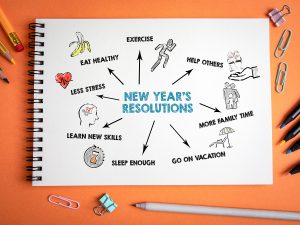 What fitness goals have you set for this New Year? Millions of people are once again trying to lose weight and follow a diet and exercise program. Often we set our intention by boldly claiming it out loud to a friend or family member. It becomes an audacious health and fitness goal. And then you dig in. Right? Well…
What fitness goals have you set for this New Year? Millions of people are once again trying to lose weight and follow a diet and exercise program. Often we set our intention by boldly claiming it out loud to a friend or family member. It becomes an audacious health and fitness goal. And then you dig in. Right? Well…
Sometimes we need an extra boost, especially when we find our willpower lagging. As we age, we might find it harder to be as disciplined as we once were. Did you know that willpower is more like a muscle in that it gets stronger with use, but also wears out from fatigue?
Pleasure Seekers
We are first and foremost pleasure-seeking animals at our core. And we are one of the few mammals who can and will delay gratification if we see a more important goal in the future. Not everyone is practiced and skilled at this, but we can become so. By turning your fitness goals into routine habits, you’ll find success easier to maintain.
Talkers and Doers
What separates the talkers from the doers is action. I don’t know many people who don’t struggle with starting a healthy exercise or eating program. And those who start it often drop out because it’s simply hard to change and sustain any habit, especially an exercise or dietary habit.
Sure, it helps to enlist friends and family for support. Just make sure you don’t spend too much time talking about your resolutions instead of doing them. Talking helps because when you tell someone you’re following a diet and going to lose weight, you start to feel bad when you don’t take action in that direction.
It’s called “cognitive dissonance” because you feel guilty after you announce your intent and then do the opposite.
The Reason “Willpower” Doesn’t Always Work for Fitness Goals
Don’t feel bad if you find yourself lacking in the discipline and willpower that you might have once possessed but find harder at an older age. The truth is that making a decision and taking action that supports your goal takes energy—a lot of brain energy. Remember, although the brain is a small organ, it uses up to 25% of your glucose reserves for fuel.
When you make a decision, some of your brain fuel gets used up. Too many decisions (“What should I eat? When will I exercise? Have I eaten enough, is this on my diet, should I eat now or later?”) and you will quickly find yourself without sufficient willpower.
There go your resolutions out the door. When that happens, we tend to adopt a WTH attitude: “What the heck, I’m off my diet now, I may as well eat what I want and start over tomorrow morning!”
Make Your Fitness Goals Bullet-Proof
The solution? Make your diet and exercise goals bullet-proof. Set yourself up for routines. No decisions necessary. Like brushing your teeth. Pair it up with a morning task like combing your hair. Take the decision-making out of the action. Make it a routine.
For example, prepare the night before to have fruit or other breakfast item after your coffee, after you’ve dressed, before you leave the house. Or, do sit ups in your pj’s, before coffee, before getting washed and dressed.
Set out your gym clothes and work clothes the night before, go to the gym first thing no matter what.
If you create a regular routine that’s automatic, you won’t need to think about it, you will just do it. No willpower. Just action. Automatic.
Here’s how some savvy seniors find the motivation to get started and keep at it.
Make Fitness Goals Permanent
First off, write down your stretch fitness goals. Your stretch goal should be something you dream of being able to achieve, but don’t really know if you could do it. If you need a reminder of what S.M.A.R.T. goals are, they are specific, measurable, achievable, realistic, and stated within a time frame.
Here’s an example you can tailor for yourself. Let’s say you want to enter a pickleball tournament six months from now, and you’re brand new to the game. Your first step is to work on your cardio, while simultaneously improving your game.
Specific goals: I will walk a minimum of 60 minutes, three days each week. Each successive week, I’ll add more steps (distance) or add a greater incline until I can do four miles in an hour. I’ll play Pickleball a minimum of 90 minutes two days each week.
Measurable: I’ll use my Google Fit tracker or my Apple Watch to monitor walking distance, time, and incline, and, track my Pickleball play time.
Achievable: Based on what other Pickleball beginners have done, and my motivation, I know I can achieve this. I will share my goals with my Pickleball buddies and ask them to hold me accountable.
Realistic: Because I have been walking two miles, three times per week, and based on the information shared with me from my Pickleball buddies, as well as their support, I know I can realistically accomplish this.
Time-bound: The tournament is in six months, and I’ve allowed enough time to learn, practice, and train to build up my endurance and strength.
Ready, Set, Go!
There are always good reasons to put off fitness goals. I mean really good reasons that are impossible to deny. Life happens. But why wait? Start the year off right with a Stretch-plus-SMART fitness goal.
The more you make fitness goals routine, the quicker you will see results. Don’t rely on willpower. Make your actions permanent habits. You can do this.

Recent Comments